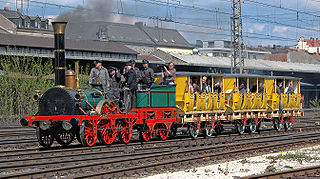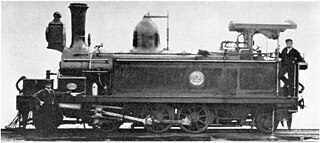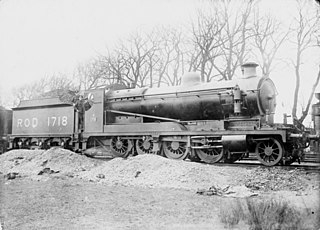
The 42nd Infantry Division was an infantry division of the British Army. The division was raised in 1908 as part of the Territorial Force (TF), originally as the East Lancashire Division, and was redesignated as the 42nd Division on 25 May 1915. It was the first TF division to be sent overseas during the First World War. The division fought at Gallipoli, in the Sinai desert and on the Western Front in France and Belgium. Disbanded after the war, it was reformed in the Territorial Army (TA), in the Second World War it served as the 42nd Infantry Division with the British Expeditionary Force (BEF) and fought in Belgium and France before being evacuated at Dunkirk. The division was later reformed in the United Kingdom and, in November 1941, was converted into the 42nd Armoured Division, which was disbanded in October 1943 without serving overseas. A 2nd Line duplicate formation, the 66th Infantry Division, was created when the Territorials were doubled in both world wars.

The Lancashire Fusiliers was a line infantry regiment of the British Army that saw distinguished service through many years and wars, including the Second Boer War, the First and Second World Wars, and had many different titles throughout its 280 years of existence. In 1968 the regiment was amalgamated with the other regiments of the Fusilier Brigade – the Royal Northumberland Fusiliers, Royal Warwickshire Fusiliers and the Royal Fusiliers – to form the current Royal Regiment of Fusiliers.

The 34th Division was an infantry division of the British Army that was raised in 1914, during the First World War. The division was raised from volunteers for Lord Kitchener's New Armies, that was originally made up of infantry battalions raised by public subscription or private patronage. The division was taken over by the War Office in September 1915. It served in France and Belgium in the trenches of the Western Front for the duration of the war.

The 32nd Division was an infantry division of the British Army that was raised in 1914, during the First World War. The division was raised from volunteers for Lord Kitchener's New Armies, made up of infantry 'Pals battalions' and artillery brigades raised by public subscription or private patronage. The division was taken over by the War Office in September 1915. It served in France and Belgium in the trenches of the Western Front for the duration of the war. It saw action at the Battle of the Somme, the Pursuit to the Hindenburg Line, the Defence of Nieuport, the German spring offensive, and the Allied Hundred Days Offensive beginning at the Battle of Amiens. After the Armistice it marched into Germany as part of the Army of Occupation.

Under the Whyte notation for the classification of steam locomotives, 2-2-2 represents the wheel arrangement of two leading wheels on one axle, two powered driving wheels on one axle, and two trailing wheels on one axle. The wheel arrangement both provided more stability and enabled a larger firebox than the earlier 0-2-2 and 2-2-0 types. This wheel arrangement is sometimes described as a Single, although this name could be used to describe any kind of locomotive with a single pair of driving wheels.

The Northumbrian Division was an infantry division of the British Army, formed in 1908 as part of the Territorial Force with units drawn from the north-east of England, notably Northumberland, Durham and the North and East Ridings of Yorkshire. The division was numbered as 50th (Northumbrian) Division in 1915 and served on the Western Front throughout the First World War. Due to losses suffered in the Ludendorf Offensive in March 1918 it had to be comprehensively reorganized. It was once again reformed in the Territorial Army as the Northumbrian Division in 1920.

Under the Whyte notation for the classification of steam locomotives, 2-6-2 represents the wheel arrangement of two leading wheels, six coupled driving wheels and two trailing wheels. This arrangement is commonly called a Prairie.

The Great Central Railway (GCR) Class 8K 2-8-0 is a class of steam locomotive designed for heavy freight. Introduced in 1911, and designed by John G. Robinson, 126 were built for the GCR prior to the First World War. Including wartime construction for the British Army ROD and the post-war GCR Class 8M, the class and its derivatives totalled 666 locomotives.

The Royal Northumberland Fusiliers was an infantry regiment of the British Army. Raised in 1674 as one of three 'English' units in the Dutch Anglo-Scots Brigade, it accompanied William III to England in the November 1688 Glorious Revolution and became part of the English establishment in 1689.

The Railway Operating Division (ROD) ROD 2-8-0 is a type of 2-8-0 steam locomotive which was the standard heavy freight locomotive operated in Europe by the ROD during the First World War.

A trench railway was a type of railway that represented military adaptation of early 20th-century railway technology to the problem of keeping soldiers supplied during the static trench warfare phase of World War I. The large concentrations of soldiers and artillery at the front lines required delivery of enormous quantities of food, ammunition and fortification construction materials where transport facilities had been destroyed. Reconstruction of conventional roads and railways was too slow, and fixed facilities were attractive targets for enemy artillery. Trench railways linked the front with standard gauge railway facilities beyond the range of enemy artillery. Empty cars often carried litters returning wounded from the front.

The Guards Division was an infantry division of the British Army that was formed in the Great War in France in 1915 from battalions of the Guards regiments from the Regular Army. The division served on the Western Front for the duration of the First World War. The division's insignia was the "All Seeing Eye".

The Palestine Railways H class was a type of standard gauge mixed traffic steam locomotive on the Palestine Military Railway and its civilian successors Palestine Railways and Israel Railways. The PMR introduced the class in 1919 and Israel Railways withdrew the last ones in 1960.
The Northumberland Brigade was formed in 1908 as part of the Territorial Force of the British Army with four battalions of the Northumberland Fusiliers. The brigade was numbered as 149th (Northumberland) Brigade in 1915 and served with the 50th (Northumbrian) Division on the Western Front throughout World War I. Due to losses suffered in the Ludendorf Offensive in 1918, it had to be comprehensively reorganized. Reformed as the Northumberland Brigade post-war, it was broken up before the outbreak of World War II.
The 63rd Division of the British Army was a second-line Territorial Force division, formed in 1914, which served on home defence duties during the First World War. The division was formed as a duplicate of the 50th (Northumbrian) Division in 1914, composed primarily of soldiers recruited in north-eastern England. It remained on home defence and training duties in the north-east and east of England until 1916, when it was disbanded. Several of its constituent units would later serve overseas, deployed for support and garrison duties in almost every theatre of the war.
217th Brigade was a Home Service formation of the British Army during the First and the Second World Wars.
The 222nd Infantry Brigade was a Home Service formation of the British Army that existed under various short-lived titles in both the First and Second World Wars
The 17th Battalion, Northumberland Fusiliers was one of the numerous Pals Battalions formed in the North East of England on Kitchener's call for men during the early parts of the First World War. The battalion was raised by the North Eastern Railway (NER) and was the only pals battalions to be raised by a single company.













